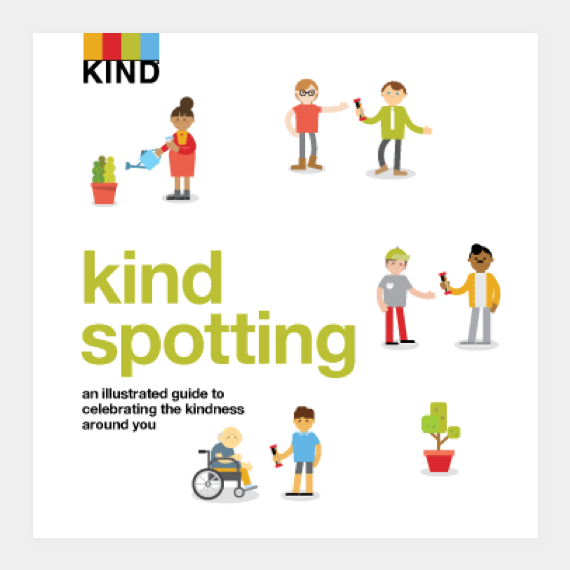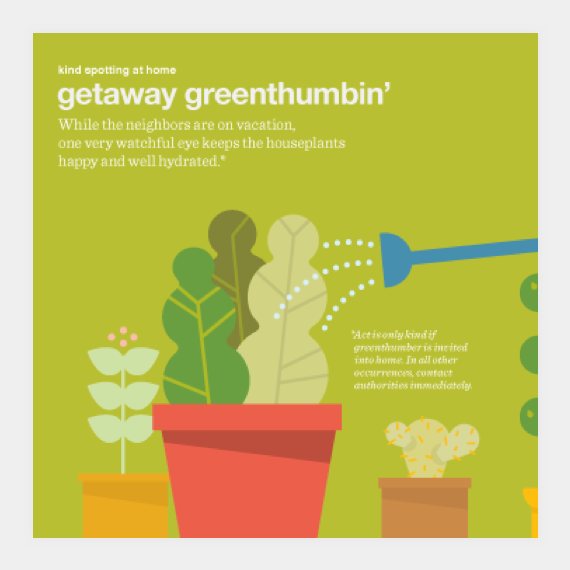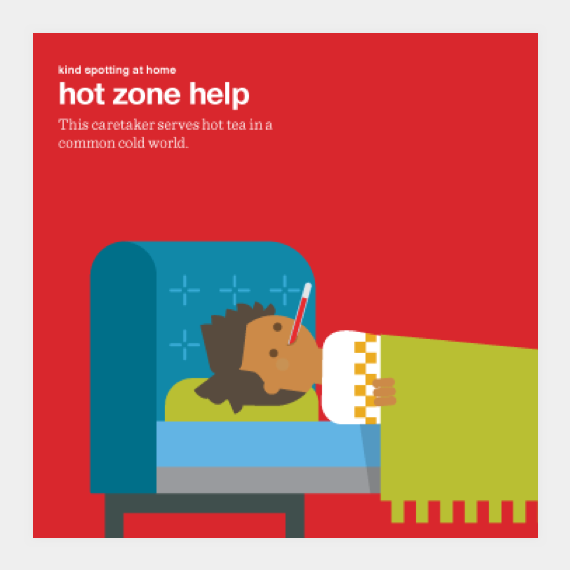“For us, if people think about us and associate us with the act of being kind, we’ve been successful.”

For most global brands, corporate social responsibility doesn’t sit in the same domain as marketing — in fact, many companies treat it as a side project. But that’s changing, and companies like KIND are leading the charge. Social responsibility is built into KIND’s DNA, and serves as a central measure of impact for the organization. They also use a more human word to describe success here: kindness.
KIND’s cheerfully packaged fruit-and-nut snack bars were launched by Daniel Lubetzky in 2004, driven in part by frustrations with his own snacking options. He was traveling all the time and wanted a snack that was nutritionally dense and tasted good. He couldn’t find anything on the market that was tasty and healthy, so he created it.
KIND bars also came about at a moment when obesity and diabetes were on the rise in America. And Lubetzky’s value prop? “Do the KIND thing for your body, your taste buds, and the world.” But kindness for Lubetzky goes far beyond the namesake of his brand and back to his personal history. He was raised Jewish in Mexico City, and his father was a Lithuanian Holocaust survivor. While in a concentration camp, he experienced many unexpected acts of kindness, some of which he believes saved his life. Growing up hearing stories from his dad, Lubetzky was inspired to prevent what happened to his dad from happening again to others. Lubetzky explained to USA Today how kindness touches everything the organization does, not just its marketing: “Kindness is one of the things that can generate happiness without money or other material inputs.” He has documented some of his thinking in his book, Do the Kind Thing.
With this philosophy at the core, Lubetzky created and named the brand we know as KIND — after a human attribute we can all aspire to. He embedded kindness into the core of the company – from its social mission, the KIND Movement, to marketing efforts that help spread kindness in fun ways among its consumers, to its philanthropy and its culture.
“How do we empower everyone in America to go out and spread kindness?”
The KIND Movement is an extension of brand’s philosophy on kindness. Through its one-of-a-kind activations, KIND hopes to find an answer to a deceptively simple question. As director of the KIND movement and a core member of KIND’s marketing team Dana Rosenberg posed it to us, “How do we empower everyone in America to go out and spread kindness?”
Enter #kindawesome: a customer engagement program with a twist. There’s nothing monetary attached to KIND’s latest marketing campaign, unless you count kindness as currency.
KIND team members are always looking to celebrate kindness, so they decided to extend the practice beyond just the organization. They began by looking out for kind acts as they occurred, whether it was offering someone a seat on the subway, or helping somebody cross the street. The premise was simple but powerful: spot someone doing something kind, and give them a #kindawesome card. The card is designed on a simple pay-it-forward model: pass it on when you spot another kind act-in-progress. The act of card-passing creates a domino effect of kind acts as the recipient received their own card to pass along to somebody else.
On World Kindness Day — November 13, 2015 — the KIND team decided to expand the movement’s presence by engaging consumers on the ground in 24 markets to spread kindness with #kindawesome cards and also by spreading the word on social media. Started by the World Kindness Foundation, a global coalition of humanitarian organizations, World Kindness Day encourages participants to make a “declaration” of kindness — random acts of kindness especially.



KIND also sent designated “kindness spotters” boxed kits to get influencers involved with the campaign: a box filled with KIND bars, a booklet explaining how the Movement works, and a stack of #kindawesome cards. It’s got a distinctively playful feeling about it, almost gently mocking the “not in my backyard” philosophy that dictates big-city living. The illustrated booklet is a “kind spotting” guide with sample scenarios for “at home,” “on the job”, and even “on the internet.”
KIND leveraged the momentum of World Kindness Day to give #kindawesome a big digital push, and make the card-sharing more scaleable — people could now share kindness cards on email, Twitter, Facebook, and text message. Dana and her team also ran a two-week media flight with a dedicated #kindawesome digital hub, and a social campaign using the campaign hashtag. To execute #kindawesome, the team brought a diversity of expertise to the table: social and digital media, influencer marketing, communications, and IT.
“The most surprising outcome was the number of people asking for more #kindawesome cards. Turns out one wasn’t enough.”
They looked for advocates who would spread the word, too. “We sought the help of some of the most influential people we know to help recognize the kindness all around us,” Dana says, “[These were] people who lived the KIND lifestyle, from the food they eat to the way they live their lives.”
In a digital-first world, #kindawesome proves two important things: first, not every big brand activation has to be a Super Bowl spot or a viral social campaign, and second, kindness can be a real measure of success. For all the hashtag activism that runs social media today, KIND is cutting through the noise with a powerful call to — quite literally — action.
On social, they posted “surprise and delight” tweets with the hashtag #kindawesome and surprised Twitter users with kindness kits.
KIND measures its success based on what it calls the “brAND” philosophy — a belief that profits and good works are not mutually exclusive. It derives from the idea that KIND bars are healthy and tasty, proving that you don’t always have to chose between things that may seem incompatible at first. So if you don’t immediately think of kindness when you pick up a KIND bar to fuel your mid-day sweet cravings, the KIND team is making sure you do. For KIND, #kindawesome was an important moment in the brand’s history to get both product and the Movement message to reinforce each other in the public consciousness.
One of the most exciting responses from the campaign? Dana reflects: “The number of people who came back to us asking for more #kindawesome cards — turns out one just wasn’t enough.” Looks like this brand is changing the mood on your morning subway commute, one KIND bar and kind act at a time. M.